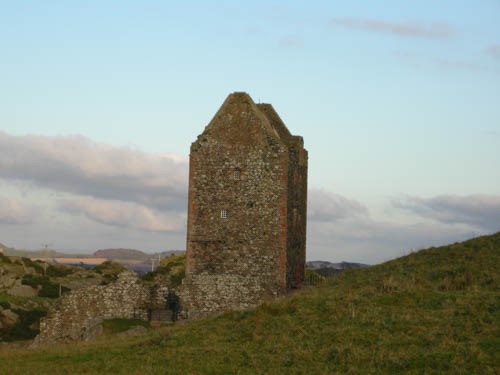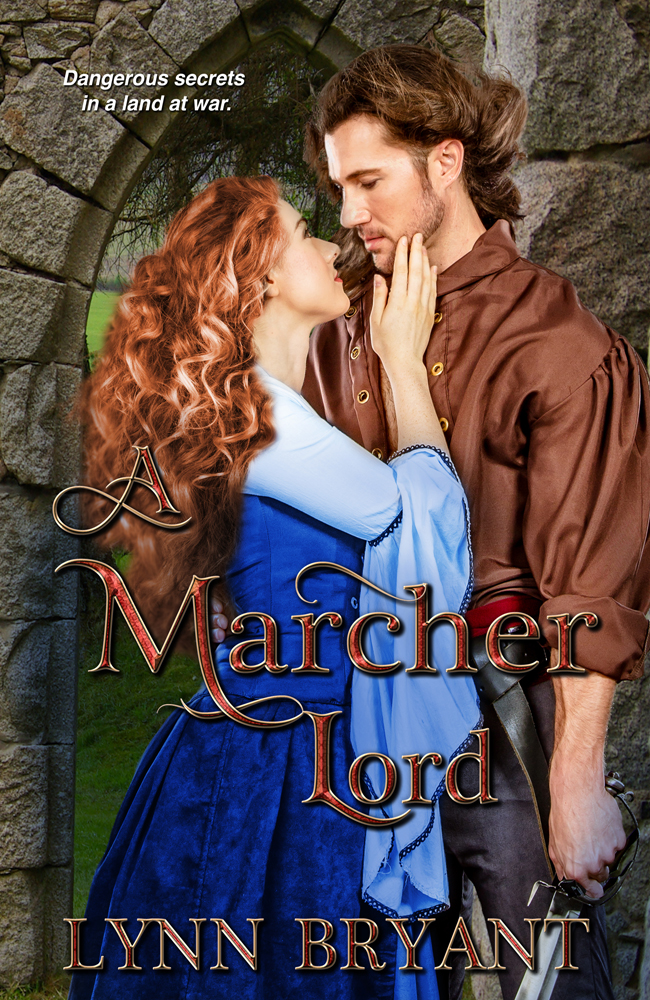
I started to write A Marcher Lord sitting at a very rickety wooden desk in a rather nice little hotel in the border town of Jedburgh. I’m not sure if the ‘Spread Eagle Hotel’ is still open, I have a vague memory on a more recent visit that it seemed to be closed but that might have just been temporary. It was an old place right in the centre and the floor in my room sloped so badly that it made me feel slightly off-kilter but the bed was comfortable and the food was amazing.
I was on one of my periodic trips to escape from my family. Having been brave enough to have two children in my late thirties, I found as they grew up that a few days away from them all once a year stopped me turning into Mummy from the hilarious Peter and Jane Facebook posts. Normal women wanting to escape from family life, talk their partner into agreeing to a cheap break to Tenerife with the girls. Never having been even faintly normal, my idea of joy was to go to the Scottish borders on my own and tramp through mud and cowpats to explore reiver country which I had recently been reading about both in P F Chisholm’s totally brilliant Sir Robert Carey books and in the non-fiction account ‘The Steel Bonnets’ by the wonderful George Macdonald Fraser. P. F. Chisholm, for anybody who doesn’t know is one of the pen names of Patricia Finney, and these books are still popping out every now and then although not nearly often enough for me.
I’d been writing on and off since I was very young and my laptop was cluttered with half finished novels. I’d finished several and made attempts to find publishers or agents and I’d had a couple of very positive responses from the Romantic Novelist Association’s New Writers Scheme. But my problem was that I absolutely adored researching and writing historical romances but the effort of trying to get one actually published was completely beyond me.
I would like to tell tales of how heartbroken I was at endless rejections, but I honestly wasn’t, I’ve always been able to shrug stuff like that off very easily. I write what I write. I know it’s fairly well written, you can’t come out of an old style grammar school without being able to put together a piece of writing that’s easy to read with correct spelling and grammar, but not everybody likes history or romance and if your favourite kind of book is a gruesome psychological thriller with a hero with darkness in his soul you’re probably not going to jump up and down at the publication of a Regency romance. Although having said that, I am the woman who reads both Georgette Heyer and Val McDermid. But as I said, I’m not normal.
There weren’t actually endless rejections, because I didn’t make as much effort as I could have done. I found that I got very impatient with the whole process and when finally, after months of hearing nothing, I would send a polite chasing e-mail asking if they’d read the damned thing, I invariably got a very fast ‘not our sort of thing’ response which I rather suspected meant either ‘lost it and can’t be bothered to look for it’ or ‘oops, didn’t see this one, haven’t read it but it doesn’t matter because we’re never going to take a chance on a new author writing straightforward historical romance.’
Self-publishing used to be very expensive and I never considered it until the advent of kindle. Even then I resisted the idea for a long time. It used to be called vanity publishing, and there was definitely a stigma about it. I’m not sure if there still is, but I finally realised that since I love to write and put a lot of time and energy into making the books I write as good as I can, I’d rather like people to read them and enjoy them and come back for more. Perhaps if I’d persisted, I would have found a publisher. As it is, I now have eight books out there and people are reading them and seem to be enjoying them.
I began A Marcher Lord after my first visit to Smailholm Tower which is somewhere between Kelso and Melrose. I arrived there, driving my poor car through a farmyard, very late in an autumn afternoon and the tower itself was closed. I climbed up to the base of the tower to take some photographs and the atmosphere of the place just drew me in. Standing there looking out over the hills, with the trees the most glorious shades of autumn colours, I felt as though I could have drifted back in time. There was no sign of the twenty first century. In my mind I was already populating the land around me with smallholdings and cattle and sheep and a tough border lord who is wrapped up in the complicated politics of the Scottish court as well as trying to keep his lands and his people safe from the English invaders and marauding reivers. Not much time for romance there, I’d have thought…
Smailholm Tower
[slickr-flickr search=”single” photo_id=”33032646816″ type=”slideshow” size=”large”descriptions=”on”]
Out of that lovely afternoon was born Will Scott, Lord Crawleigh, a man of honour in a time when honour was often for sale; Jane Marchant with her courage and free spirit, and A Marcher Lord, a love story set against the backdrop of a brutal war.
I love this book, I loved researching and writing it and I’m planning on writing a sequel next year. Despite their very complicated circumstances, Will and Jenny are possibly my most straightforward hero and heroine and I like that about them. A Marcher Lord is now available in paperback as well as on Kindle.
For regular updates on this site including history, travel, book reviews and plenty of labradors (and a few freebies thrown in) please join the e-mail list here.


